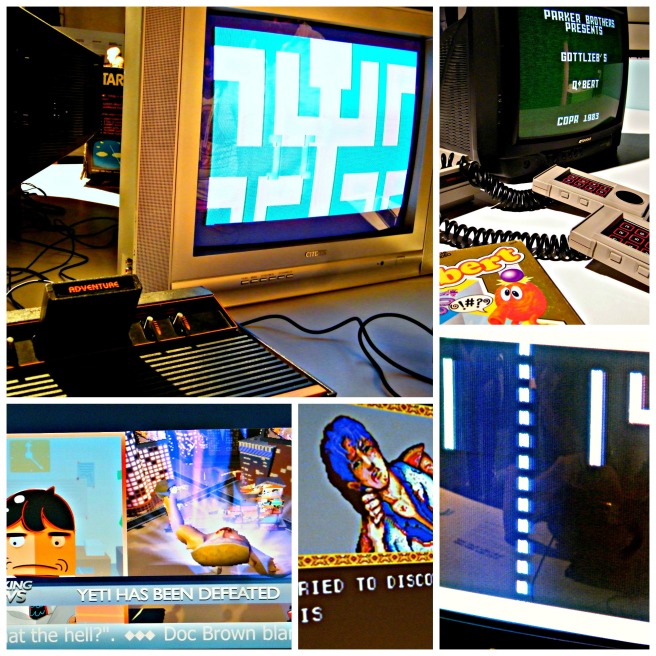The history of console games is largely concurrent with my own history.The first console game I ever played was a variation of Pong. My sister and brother and I would go over to my uncle’s house and we’d take turns playing that game with our cousins for hours. It might be unimaginable now, but that square “ball” slowly moving back and forth across the screen was fascinating and fun for us.
It wasn’t long before our gaming options increased and that first game system was gathering dust. Our adolescence happened during the heyday of arcade gaming and I can remember spending afternoons giggling with my sister across a tabletop console, playing Asteroids. Now, that game doesn’t seem much more sophisticated than Pong.
My fascination with gaming waned until well into my adulthood, when I started to become curious about games’ potential for storytelling. Today’s games are richer, visually and experientially, than anything we could have imagined while playing those early games. They are also gaining ground in the realm of storytelling. Though Roger Ebert famously denied games’ potential as art, it’s likely that history will prove him wrong. When you look at how quickly games have progressed since the early Seventies, art might not be too many iterations away.
More importantly for most of us, though, was the camaraderie that was such a big part of gaming. It’s where our culture first learned that interacting with machines could become a profoundly social experience. Those moving pixels were very rarely a solo show – kids would crowd around consoles at home, or do battle in twos, and at the arcade, score-sharing and rivalries were the order of the day.
That’s the scene that was playing out today at the Centre for Digital Media, where I went to experience their exhibit, the Evolution of Gaming. They had examples of many of the most popular games from 1972 onward. It was interesting to try my hand at some of my old favourites, but it was more interesting to see families with kids exploring the equipment and testing out gameplay – gingerly, for most of the consoles had large labels asking users to play gently. I imagined the parents were trying to describe how new and innovative these games were when they first arrived on the scene.
At the same time, you can see how the structure of games has remained constant throughout the years, too. Many of the role-playing games are remarkably similar to the more technically and visually complex RPGs of today. There’s even something charming about their pixelated simplicity. The same can be said of fighting games, too. The changes in responsiveness have made games more challenging, but they are understandable in the same terms as those earlier games.
Perhaps my favourite part of the exhibit was the newest game, a virtual reality romp that has you in the role of an angry Yeti let loose on downtown Vancouver. I enjoyed it not because it’s so much more advanced than the others on exhibit, but because virtual reality games are in their infancy. That newness, with so much potential and so many limitations, brought the exhibit full circle. It made me wonder how quickly this generation of games will become artifacts and what new ways we’ll find to connect and explore in the realm of machines.
The Evolution of Gaming is on until August 10th at the Centre for Digital Media.






I can’t believe you didn’t give a shout out to the Bionic Commando!!
I’m sorry to say that the Bionic Commando was nowhere to be found there. He was probably too busy to attend.